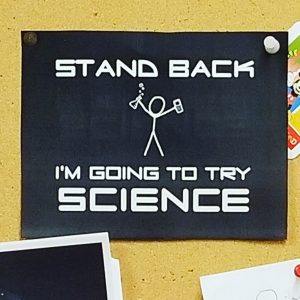“Question everything…until you don’t want to go outside of your house” M.Lipsen
I chose to observe one of my mentors, Dr. Michael Lipsen, during one of his lectures in EOSC 470 course (Biological Oceanography). I have been co-teaching a course with Michael for about 3 years and learned almost all my teaching skills from him. I think one of the great aspects of his teaching is the ability to engage students through the conversations with them. Thus, his class does not really look like a lecture rather as a dialog on a given topic.
Pedagogical Content Knowledge. In my teaching, I use many tools to make my teaching more engaging for students, as I lack the ability to keep their attention for a long time. As a result, I create a lot of visuals, activity sheets, group discussions, concept sketches, and other activities to keep the students focused. Michal, on the other hand, have an amazing ability to keep the attention of the students throughout the lecture without the use of any creative techniques or activities.
However, it does not mean that is teaching is boring or disengaging. His lecture was based on constant back and forth dialog between him and his students. Right from the beginning, he showed a photo of the ocean with various marine organisms that were collected from a local beach in Vancouver, asking students to identify the most abundant one. Such bridge-in activity engages students in inquiry process right at the start of the class.
Methods of the presentation. During the lecture, Michael periodically asked questions that either tested whether students remember the material from previous lectures (or courses!) or to engage them in critical thinking. He also emphasized the point of critical thinking in learning, challenging students to find weaknesses and assumptions in the introduced theories as well as find the limitations of the proposed techniques and concepts. Thus, he emphasized that the dominant paradigm that existed in science were turned upside down because someone started questioning it.
Relevance. Michael is one of the few professors that I saw teaching who incorporates recent findings in his lecture. Most of the instructors teach the same slides for years, without changing much of the material. Michael can change his lectures a couple hours before the lecture because he found a very interesting article that has just been published. He is also up to date with all the new things that happen in the area and always mentions existing disagreements, new emerging theories to his students.
Flexibility. During the class he was also very accommodating, allowing the group of students who were going to present next week to hand in their assignments later as there was a Thanksgiving holiday during that week (so students can enjoy the holiday and not being stressed of submitting the assignment on time).
Student Learning. To make content relevant to the students, Michael provides many local examples so that students can better relate to the concept he is talking about. He is also one of the few instructors that emphasize the importance of memorizing the new terms/ concepts for both first and upper year courses. In his lecture, he provided a slide of all new concepts and vocabulary that have been introduced during the class and briefly re-emphasize the importance of each of the item in the list.
Beyond the classroom. He also encourages students to participate in the life of the department. He showed photos of the pumpkins from last year pumpkin carving contest in our department. He chose pumpkins that were carved in a shape of the organisms that were studied during the class. Although it seemed like a small distraction from the lecture, I think it actually had a deeper meaning: this demonstrates that the knowledge they obtain from the course can be applied outside of the classroom, and not necessarily should be boring. Having fun in Science is one of the major themes present throughout Michael’s lectures.

No wonder Michael has this sign on the wall next to his office.
Things to improve. I think that there is one thing that can be improved in Michael teaching: assessment of student learning throughout the lecture. Although Michael posed a lot of questions during his lecture, only a few students participated. Thus, it was not clear whether everyone is keeping up with the material being taught. To go far beyond just asking students “do you get it?”, it is possible to incorporate different activities into the teaching: such as clickers or group discussion.
However, taking into the account the personality of the instructor and his teaching styles I also suggested a more creative way of assessment: hand signals. This technique can be used to rate students’ understanding of content. Students can show anywhere from five fingers to show that they have a maximum understanding to one finger to show that they are struggling with eth materials.
Each of the suggested technique requires a different amount of time and is suitable for different size classes. They also vary in the amount of student-student interactions (see Table below). Thus, depending on the objectives of the course and the time constraints different activity can be chosen. Hand signal provides and instantaneous feedback for the instructor and is suitable for a class of 20 people that Michael is teaching. Student- to student interaction is not crucial during the lectures as the course incorporates weekly group activities for the entire class period at the end of each week.
|
Activity |
Time required | Student-student interaction |
Appropriate class size |
| Iclickers | ~1min | minimal | Any size |
| Group problem solving | ~3-5 min or more | A lot | Any size |
| Hand signals | ~30 sec- 1 min | Minimal | Small to medium (20 ppl) |
